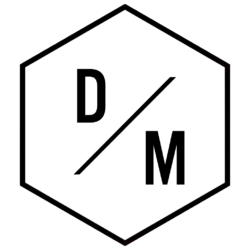As Los Angeles businesses seek to enhance user experiences and optimize web development timelines, AI tools are increasingly integral to design workflows. Digital Silk, a renowned agency specializing in branding and digital marketing, underscores how artificial intelligence is revolutionizing web design by automating complex tasks while complementing human creativity. These advancements are driving scalable, consistent, and compliant digital solutions tailored to enterprise requirements, especially within regulated industries.
AI Tools Driving Efficiency in Los Angeles Web Design Workflows
The adoption of AI-powered platforms such as Adobe’s AI integrations, Figma, Sketch, and InVision enables teams to accelerate UI layout generation, streamline prototyping, and refine design iterations faster than traditional manual methods. According to a Deloitte 2024 report, 67% of mid-to-large US enterprises actively explore or employ AI solutions for aspects including user journey mapping and responsive content structuring, with 43% reporting significantly reduced turnaround times.
- Responsive UI layout generation adapting to dynamic user behavior
- Automated prototyping for rapid iterative testing
- Heatmap analytics and interaction tracking for UX optimization
- Accessibility compliance via automated semantic tagging
These capabilities reinforce brand consistency and technical performance requirements across complex, multi-page ecosystems, pivotal for sectors like healthcare and finance.
| AI Web Design Tool | Key Function | Enterprise Benefit |
|---|---|---|
| Adobe AI Suite | Automated layout and asset optimization | Faster design cycles and quality outputs |
| Figma | Collaborative wireframing with AI suggestions | Improved team coordination and design accuracy |
| Sketch | Visual consistency checks and plugin integrations | Maintains brand guidelines effectively |
| InVision | Interactive prototyping and real-time feedback | Accelerates user testing phases |
More insights on AI enhancements for coding environments and creative workflows can be found in this technical overview of digital design tools.
Customization and Compliance: AI’s Role in Enterprise Web Projects
Integration of AI within tools like Canva, Webflow, Squarespace, and Wix enables tailored design experiences that adapt to user analytics and regulatory frameworks. Enterprises benefit from:
- Personalized content generation aligned with brand messaging
- Automated compliance verification, essential for privacy and accessibility laws
- Performance optimization ensuring fast load speeds and SEO readiness
- Seamless integration with CMS and digital marketing platforms
Framer’s AI-enhanced prototyping supports fast revisions tied directly to functional outcomes, benefiting teams seeking agility in volatile markets.
| Feature | AI Contribution | Enterprise Impact |
|---|---|---|
| Responsive Templates | AI-driven adaptive layout generation | Enhanced UX across all devices |
| Compliance Checks | Semantic tagging and regulation adherence | Ensures legal and accessibility standards |
| Content Personalization | Automated content suggestions based on user data | Improves engagement and conversions |
| Performance Analysis | Real-time monitoring and optimization | Minimizes bounce rates, boosts SEO |
For a detailed look into advanced web development technologies, explore our comprehensive guide to top web development IDEs and platforms at Dual Media.
Balancing Automation With Creative Strategy In AI-Enhanced Web Design
Digital Silk’s leadership emphasizes that AI is a support tool rather than a creative substitute. CEO Gabriel Shaoolian notes that AI reduces friction in design workflows while empowering teams to keep pace with evolving user expectations. This balanced approach marries algorithmic efficiency with human ingenuity.
- Integration of AI-generated insights without compromising creative direction
- Acceleration of repetitive tasks, freeing designers for innovation
- Utilization of heatmap analytics to refine user interface decisions
- Continuous iteration enabled by AI-supported testing environments
In this context, tools such as Adobe, Figma, and InVision enable rapid iteration cycles, complemented by platforms like Canva and Webflow for deployment flexibility.
| Workflow Aspect | AI Enhancement | Outcome |
|---|---|---|
| Idea Generation | AI-assisted brainstorming and trend analysis | Informs innovative design concepts |
| Design Iteration | Automated prototyping and feedback loops | Speeds approval and refinement |
| User Testing | Heatmaps and interaction analytics | Improves UX based on real data |
| Final Delivery | AI-driven documentation and asset generation | Ensures consistency and compliance |
To broaden knowledge of AI’s role in productivity and digital transformation, explore relevant articles including AI-driven sales innovations and current AI trends.


